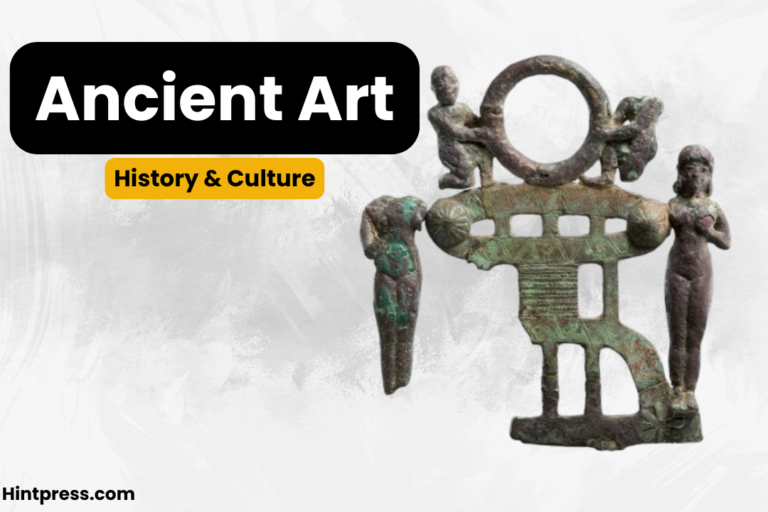Understanding Dihward: The Complete Guide

Dihward is gaining attention in digital innovation and technology. It represents a shift toward smarter systems, better integration, and advanced data management. In this detailed post, we will explore what Dihward means, how it works, its benefits, and where it stands among competitors. The goal is to make Dihward simple to understand while showing its growing real-world importance.
Introduction to Dihward
Dihward is a modern concept that connects digital transformation with intelligent automation. It combines data systems, smart analytics, and adaptive learning. Helps companies manage complex operations with improved accuracy and speed.
In today’s fast-moving world, this provides better communication between technology and users. It integrates artificial intelligence, machine learning, and automation tools. The result is a system that can make decisions faster and more accurately than ever.
History and Development of Dihward
The story of Dihward began as a simple framework for data exchange. Over time, it evolved into a complete ecosystem for digital efficiency. Dihward’s creators wanted to solve one big problem: how to make systems communicate better.
In the early 2010s, researchers started merging automation with smart analytics. This led to the foundation of Dihward. With continued advancements in cloud computing, AI, and IoT, this became a flexible and scalable platform. Now, it supports industries like healthcare, finance, education, and manufacturing.
How Dihward Works
Dihward operates through a network of connected modules. Each module performs specific tasks and shares information across the system. The process involves four main layers:
- Data Collection – Dihward gathers data from sensors, applications, and online systems.
- Data Processing – The system processes raw information into readable insights.
- Decision Layer – Artificial intelligence evaluates the data and makes recommendations.
- Action Layer – Automation tools perform actions based on those recommendations.
This seamless structure helps Dihward adapt to different industries. Whether managing customer support or production lines, Dihward ensures efficiency and accuracy.
Key Features of Dihward
Dihward includes a wide range of innovative features. Each function improves overall productivity and reduces human error. Here are the most notable features:
- Real-Time Analytics: This provides live insights into operations.
- AI-Driven Decisions: It uses algorithms to make smart, fast decisions.
- Cross-Platform Integration: This connects with various digital tools.
- Scalability: It grows with your business needs.
- Automation Capabilities: Dihward can automate repetitive tasks.
These features make Dihward a trusted choice for digital solutions across multiple industries.
Real-World Applications of Dihward
Dihward has real-world applications in both small and large organizations. Its flexibility allows companies to apply it across departments. Some common uses include:
- Healthcare Systems: This manages patient data and supports diagnosis.
- Finance and Banking: It automates transaction monitoring and fraud detection.
- Retail and E-commerce: This helps track sales and predict consumer trends.
- Manufacturing: It controls machinery, supply chains, and logistics.
- Education: This personalizes learning through intelligent analytics.
Each of these sectors benefits from Dihward’s accuracy, speed, and adaptability.
Benefits of Using Dihward
There are numerous benefits to using Dihward. Its impact extends across cost efficiency, productivity, and accuracy. Below are the major advantages:
- Improved Efficiency: This reduces the need for manual work.
- Data Accuracy: It ensures clean, consistent, and reliable data.
- Faster Decision-Making: This AI helps companies act in real-time.
- Cost Reduction: It saves money through automation and error reduction.
- Enhanced User Experience: This creates smoother, user-friendly systems.
When applied correctly, Dihward transforms how organizations operate and compete in digital markets.
Dihward vs. Competitors in October 2025
In October 2025, Dihward stood out as one of the strongest contenders in digital transformation tools. Its competitors include systems like NexaFlow, Autovance, and DataVerge. However, this leads to flexibility and scalability.
Unlike others, This integrates machine learning and automation without heavy setup. Competitors often require custom coding or third-party support. Meanwhile, this provides plug-and-play adaptability.
Moreover, analytics are more user-friendly. Many businesses choose Dihward for its transparency, which allows better understanding of decision-making processes. This clarity gives this an edge in customer trust and long-term reliability.
How to Get Started with Dihward
Getting started with Dihward is simple and structured. The process involves a few easy steps:
- Identify Goals: Understand your business needs and data challenges.
- Select Modules: Choose the Dinward Tools that match your objectives.
- Setup Integration: Connect Dihward with your existing systems.
- Train the System: Let the AI learn from your company’s operations.
- Monitor and Adjust: Analyze outcomes and fine-tune the automation.
With these steps, businesses can quickly implement Dihward. Even small teams can start using it within days.
Dihward in Different Industries
Dihward has spread across multiple industries. Each field uses it differently, but the core idea remains the same: smarter data and automation.
- In Manufacturing: This monitors production lines and predicts maintenance issues.
- In Healthcare: It handles patient data and medical imaging.
- In Finance: This automates compliance checks and transaction analysis.
- In Education: It supports personalized learning systems.
- In Retail: This tracks sales trends and inventory flow.
Each industry tailors Dihward to fit its unique needs while maintaining efficiency.
Future of Dihward
The future of Dihward looks promising. Experts predict that by 2030, it will become an essential part of digital ecosystems. Continuous updates will make this smarter, faster, and more user-friendly.
The focus will likely shift toward environmental impact, data security, and global connectivity. Dihward may soon integrate quantum computing and advanced neural processing. These improvements will enhance its speed and intelligence even more.
As industries evolve, will adapt to handle the challenges of future data management.
Challenges in Dihward Implementation
Despite its strengths, Dihward comes with certain challenges. Understanding them helps ensure a smooth setup.
- Initial Setup Cost: Small companies may find early investment high.
- Training Needs: Employees must learn how to use Dihward properly.
- Data Privacy: As with any AI tool, security must remain a top priority.
- Integration Complexity: Some older systems may need adjustments.
These issues are common with new technology. However, with proper planning, they can be managed effectively.
Why Businesses Prefer Dihward
Businesses prefer Dihward because it delivers consistent results. It reduces manual work while maintaining high accuracy. Also, Dihward’s easy customization allows companies to expand its use as they grow.
Furthermore, this focuses on transparency and data ethics. It keeps companies compliant with modern data protection laws. As automation becomes more vital, this offers the flexibility businesses need to stay ahead.
Dihward’s Impact on Digital Transformation
Dihward is changing how digital transformation works. It replaces outdated systems with adaptive, intelligent models. Organizations that use this report higher efficiency and customer satisfaction.
Moreover, Simplifies processes like data analysis, prediction, and decision-making. It shortens project timelines and improves communication between departments. The result is a smoother digital ecosystem that grows with market demands.
The Future Relationship Between Humans and Dihward
As technology evolves, the bond between humans and Dihward will grow stronger. This will not replace people but enhance their capabilities. By automating simple tasks, humans can focus on creativity and strategy.
This collaboration builds a balanced future where human intelligence and digital precision work together. It also opens doors to new industries and job roles centered around AI management.
Conclusion
In conclusion, Dihward is not just a tool but a transformation engine. It connects systems, improves efficiency, and simplifies data operations. From healthcare to finance, this proves its strength in real-world applications.
Moreover, AI-driven platforms empower businesses to grow faster and make smarter choices. While there are challenges, the benefits far outweigh them. The continuous innovation behind this ensures it will remain a leading digital solution for years to come.
Ultimately, it shapes the future of automation, making technology more intelligent, connected, and accessible. With every update, it becomes clearer that this is the key to a more efficient digital world.






